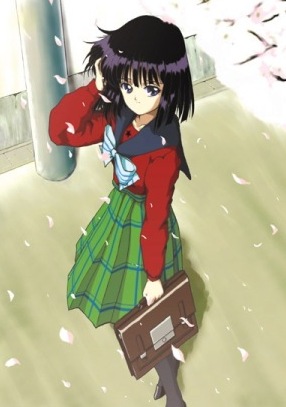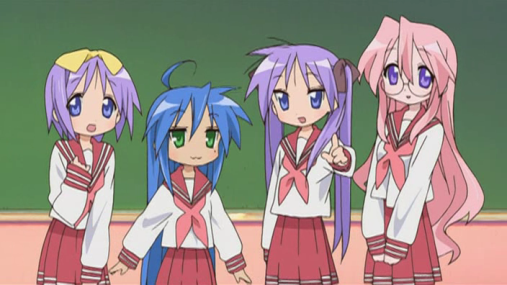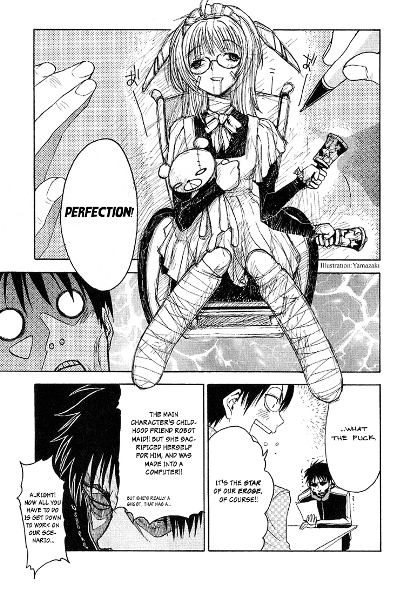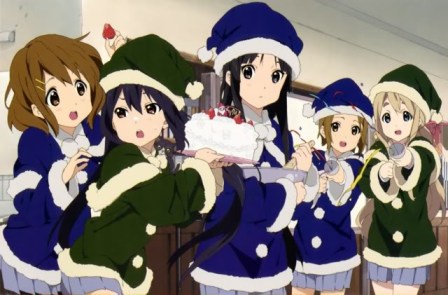The word ‘moe’ is one which often seems to be used as a throw-away term within the anime fan community – it’s actually been bandied around on internet message boards and forums since the 1990s, but has only become popularised within the Western-speaking fandom since the early to mid-2000s.
Since I’ve used the word myself several times in previous articles here on Otaku Lounge, it’s probably high time I explained the term further.
As with my first article for Otaku Lounge in which I delved into the word ‘Otaku’, the best way to tackle ‘moe’ is to first start with its linguistic roots.
Pronounced “mo-eh”, the kanji used to write it is with the characters that literally translate as “to sprout” or “to bud”. There’s also been some argument that ‘moe’ originated from ‘moeru’, meaning “to burn”. Hence moe with regards specifically to anime can be regarded as a young, innocent female character who is in the midst of reaching maturity, and who incites a burning passion from her fans.
How the term ‘moe’ came about at all is something of a mystery, but suggestions include that it stems from the character of Sagisawa Moe (Kyouryuu Wakusei, 1993), or from the character of Tomoe Hotaru (the Sailor Moon metaseries). Both of these characters are not only cute but also delicate or fragile, triggering a protective reaction from male fans – much like one might feel if they came across a tiny bedraggled kitten, or to put it in more human terms, something like an older brother might ideally feel for his adorably innocent sister.
It’s nothing to do with logic or rational thinking, but rather an instinctual emotive response.
I feel it’s also important to note that this reaction is not an inherently sexual one, although this too is possible. I want to cuddle the super cute baby seal, not make a pass at it.
Granted, moe characters are human in form, but they’re also fictional figures, and I trust that most viewers can easily recognise this.
Of course, in order to elicit such as a reaction from a viewer, an anime character must somehow represent everything that is cute and endearing.
She cannot be too tough or independent, since otherwise she is in no need of protection. She cannot be too old, because she will then be past the age of being ‘in bloom’, so to speak. If the concept of moe is grounded in childlike charm and sexual innocence, it must be obvious in her physical, and usually also behavioural traits – a generous spirit paired with a blushing naivety, or sweetly exuberant characters with silly yet adorable speech patterns. Perhaps she is earnestly clumsy, or maybe she even has some kind of superhuman gift and is in need of someone to defend her.
For this reason, most moe characters fit certain physical stereotypes: a petit figure with a comparatively large head, enormous eyes, and a tiny nose and mouth.
Occasionally, these characteristics are blended in to an anime and the rest of its cast without seeming too out of place, as with Sakura from Cardcaptor Sakura, Saya from Peacemaker Kurogane, and Chii from Chobits. At other times, the moe ideal is taken to a far more extreme level, resulting in most of the cast of Lucky Star and Higurashi no Naku Koro ni (i.e. bobble-headed freaks). But then, Sakura’s moe qualities are more or less incidental, whereas in Lucky Star, moe is essentially the entire point of the show.
Meanwhile, recent moe-centric anime seem to be aiming for character designs who fall somewhere between the two ‘levels’, as in titles such as K-On!, Angel Beats!, and The Melancholy of Haruhi Suzumiya.
Like many concepts that originated or were popularised by anime and manga, moe seems to be a constantly evolving one.
While it may have begun as a form of protective adoration, moe has more recently started as a word that can be applied to just about anything that ignites the viewer’s intense fervour over something perceived as cute – glasses-wearing moe (Yuki from Haruhi Suzumiya), cat-ears wearing moe (that infamous scene in K-On! involving Azusa), maid moe (Sanae from Ladies versus Butlers!), or bandaged moe (made fashionable by Neon Genesis Evangelion’s Rei and used again as a base concept for the likes of Chise from Saikano).
Moe has also become widespread enough for many anime to parody the idea, often explicitly using the word itself as a shout-out to the viewers.
The host club customers of Ouran High School Host Club produce “flames of moe” after seeing what they believe to be a young man’s awkwardly burgeoning love for another male; Haruhi recruits Mikuru for the S.O.S Brigade in Haruhi Suzumiya precisely because she wants a moe mascot character (specifically, a babyfaced female with large breasts who can conveniently be stuffed into a maid outfit and made to pour tea); and the two main male characters in Welcome to the NHK attempt to create a character for a dating sim by combining nearly every single moe-type ever to be invented, with hilarious results (a bandaged, glasses-wearing maid-robot). And then there’s the moe anime that are downright weird enough that you know they just have to be tongue-in-cheek like Upotte!!, whose cast is made of anthropomorphised guns.
In all fairness however, I should point out that moe is not limited to a male audience.
One only needs to look at anime such as the previously mentioned Ouran High School Host Club, or Hetalia: Axis Powers to see that moe can also be aimed specifically at a female audience – in fact, it could be argued that a lot of anime involving effeminate bishounen and implication of boys love (not to mention all that crossdressing) could be a form of moe in itself. Even titles which are catered primarily to a male audience, like the Kuroshitsuji manga, have plenty of male moe moments.
Moe can certainly be a confusing concept. I’ve seen the word used as an adjective (“that character is so moe”), a noun (“that’s a Moe anime”), and an interjection (“mooooeeee!!!”). The easiest way to understand the idea is probably to recognise that moe has more to do with the feeling the viewer gets rather than a definition of an anime or character.
Of course, the best way to learn is always through example.
This is Otaku Lounge signing off for 2012, and wishing all its readers a very Moe Christmas!



















































































































2 Comments